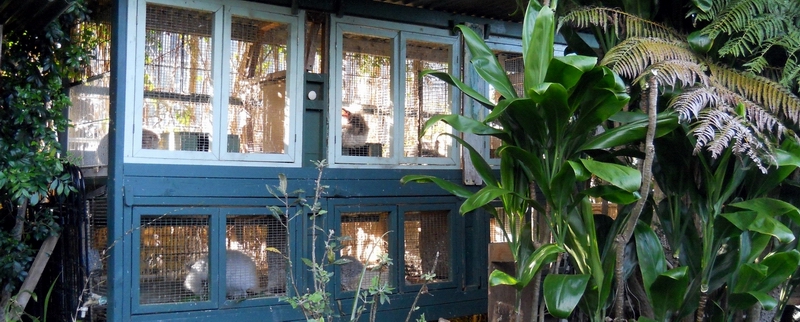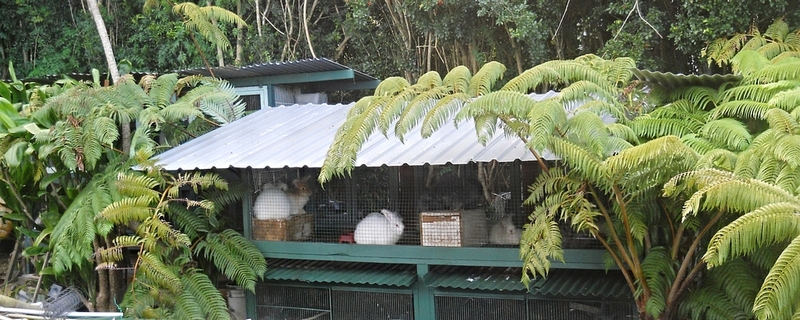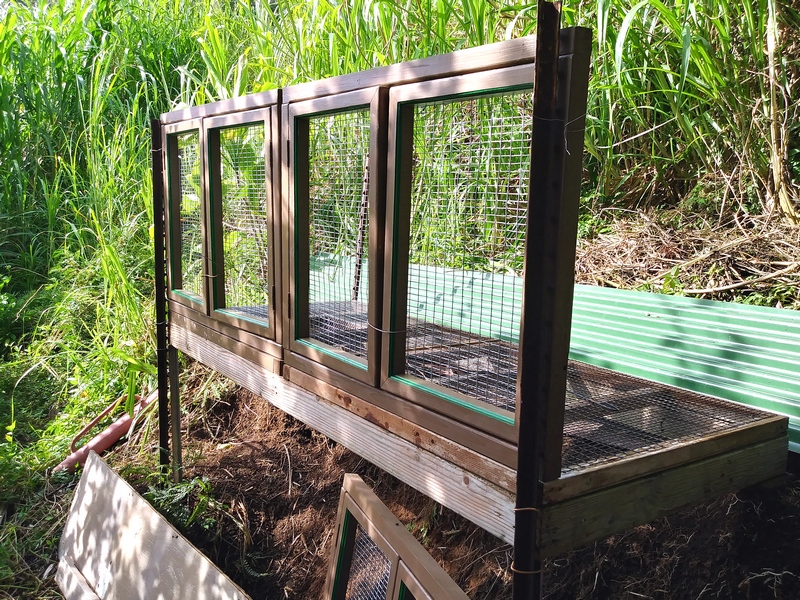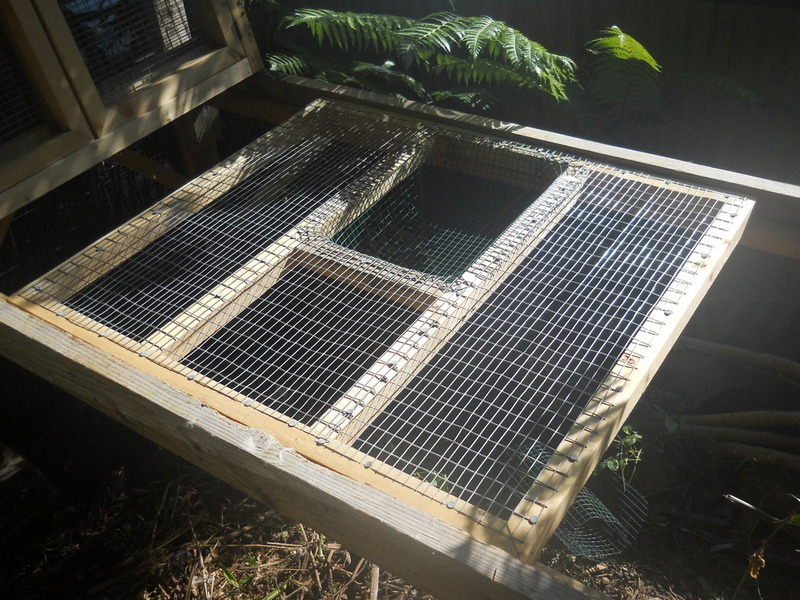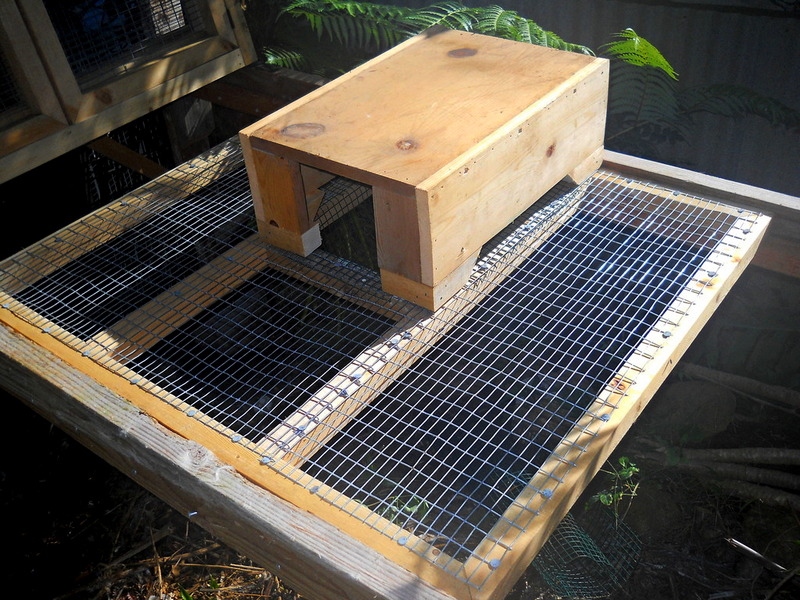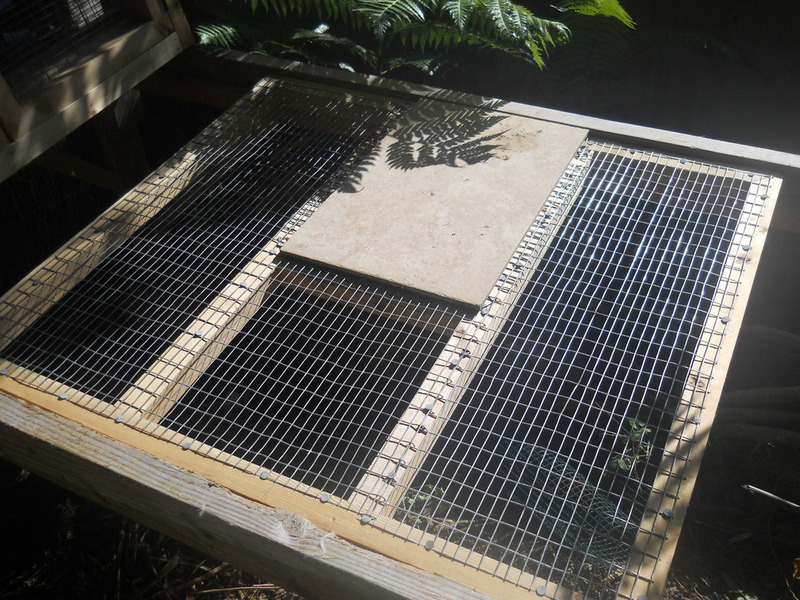This hutch was built about four years ago. It's the first of the 'modular' hutches so the floors and doors are a standard size and can easily come out for cleaning or replacement.
I tried making big feeders, but the humidity around here bollixed that idea. All the feed did was mildew. But the water system is good since the hutch doesn't need water bottles or dishes.
Now, four years later, I need to revamp the water system since the bunnies have worn some of the water nipples down, but those are easily replaceable. Three of the floor plates have needed repair, but since there's a spare floor plate, I just take the one in need of repair out and replace it with the spare and then fix that one to become the spare.
This is the second big 'modular' hutch. The floor plates match the first modular hutch, but the door sizes are different. The doors don't need repair as often as the floor plates, although I have had to put one new hinge on one door.
These modular hutches can be configured as one big space per level (there's two levels in each hutch) or made into one smaller and one bigger space or three spaces of 32" x 36+". Depending on the herd, they get shifted around. The first big modular hutch seems semi-permanently set up with six spaces and has become the 'Buck Hutch'.
The latest hutch is still sorta modular, but instead of coming apart easily, they're screwed together. Also one layer so there's no need to clean the roof of the lower level.
I don't have a completed picture posted online yet, so I can't link to it. This build was a bit fussy since it's on a hillside. The back of the hutch is basically on grade and the front is about 30" above the ground. There's a square 2x4 base made for the floor plates to sit on. On the bigger hutches, that was a long rail front and back with refrigerator racks for sides and back. This one has a solid plywood back since there may be some sort of predator and I don't want them staring at the bunnies through the back wall. All we have for predators, though, are feral cats, roaming dogs, mongoose, rats and ants. The last three are only dangerous to newborns, though.
There's also been experimentation with the floor plates to make them into 'nesting plates' and regular flat plates. Here's a nesting floor plate:
If the babies get dragged out of the nest, they can fall back in.
A box sits on top of it instead of the babies born in a box. This works pretty well for babies getting out of the nest and falling back in, however, the nest wool gets pushed out the wire bottom of the nest area, so I may put some fitted carpet scraps in there next time I find some carpet scraps.
The hutches always seem to be evolving and I suspect that there is no one 'perfect' hutch. Depending on what folks want to do with their rabbits, I'm sure each rabbitry will be different.





